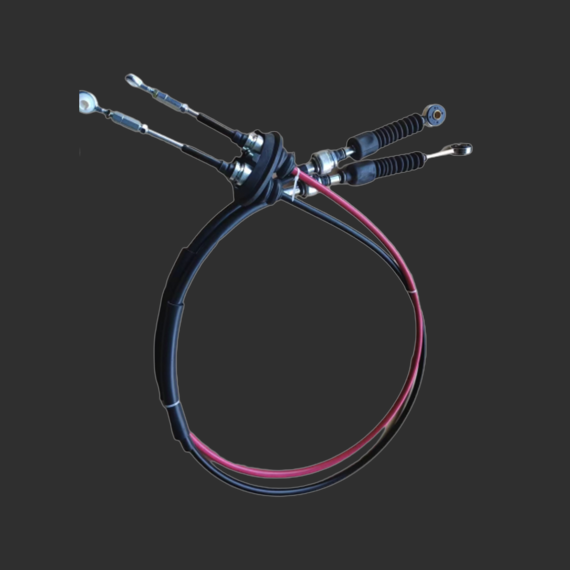throttle cable control
Understanding Throttle Cable Control Mechanics and Functionality
Throttle cable control is an integral component in many vehicles, especially those with internal combustion engines. This system is pivotal in regulating the air-fuel mixture entering the engine, thereby influencing its speed and performance. Understanding how throttle cable control works can illuminate its importance in the mechanics of vehicles, especially in optimal performance, safety, and driving experience.
The Basics of Throttle Control
At its core, throttle control refers to the mechanism that governs the amount of air entering the engine, which, in turn, controls the engine's power output. In traditional systems, this is accomplished through a throttle cable, a flexible wire that connects the accelerator pedal to the throttle body on the engine. When a driver presses the accelerator pedal, the movement pulls on the cable, opening the throttle valve and allowing more air and fuel into the combustion chamber. This increase leads to higher engine speeds and increases the vehicle's velocity.
Components of Throttle Cable Control
The throttle cable control system typically consists of several key components
1. Throttle Cable The primary component that transmits the movement from the accelerator pedal to the throttle body. It is designed to withstand various conditions while providing smooth engagement.
2. Accelerator Pedal This is the interface the driver uses to communicate their desired speed to the vehicle. When pressed, it engages the throttle cable.
3. Throttle Body The component that regulates air intake in the engine. It features a butterfly valve that opens and closes according to the cable's pull.
4. Return Spring This component ensures that the throttle valve returns to its closed position when the accelerator pedal is released, preventing unwanted acceleration.
The Importance of Throttle Cable Control
The throttle cable control is essential for several reasons
throttle cable control

1. Performance A well-functioning throttle cable allows for precise control of vehicle speed. This responsiveness is crucial for performance driving, off-roading, and racing. Any slack or wear in the throttle cable can lead to sluggish acceleration or delayed response, significantly affecting performance.
2. Safety Inadequate throttle control can lead to dangerous situations. For example, if the throttle sticks or becomes unresponsive, it can result in unintended acceleration or a total loss of engine power. Regular maintenance of the throttle cable helps ensure its reliability.
3. Fuel Efficiency Proper throttle control optimizes the air-fuel mixture, leading to better fuel efficiency. When the engine receives the appropriate amount of air relative to fuel, it operates more efficiently, which can save drivers money on fuel costs.
4. Emissions Control Modern vehicles are equipped with advanced emissions control technologies that rely on accurate throttle positioning. Throttle cable failures can disrupt this balance, leading to increased emissions and potential legal ramifications for drivers in jurisdictions with strict emissions regulations.
Common Issues and Maintenance
Like any mechanical component, throttle cables can wear out over time. Common problems include fraying or breaking of the cable, binding due to debris, or a loss of tension leading to sluggish performance. Regular checks can help identify these issues early.
To maintain throttle cable control
- Regular Inspections Check for visible signs of wear or fraying. Look out for any binding or conditions that would impede smooth movement.
- Lubrication Some throttle cables benefit from periodic lubrication to reduce friction, especially in areas where they pivot or bend.
- Replacement If signs of deterioration are apparent or if performance is affected, replacing the throttle cable is necessary. It’s a relatively simple task that can be performed with basic tools.
Conclusion
In conclusion, throttle cable control is fundamental to vehicle operation, directly influencing performance, safety, fuel efficiency, and emission control. Understanding its components and maintenance needs can help vehicle owners ensure that their cars run smoothly and safely. Regular checks and timely replacements of worn-out parts are essential to maintain the integrity of this critical system. Whether navigating city streets or tackling winding country roads, a responsive throttle cable control fosters a more enjoyable and secure driving experience.
-
Upgrade Your Control with Premium Throttle CablesNewsAug.08,2025
-
Stay in Control with Premium Hand Brake CablesNewsAug.08,2025
-
Experience Unmatched Performance with Our Clutch HosesNewsAug.08,2025
-
Ensure Safety and Reliability with Premium Handbrake CablesNewsAug.08,2025
-
Enhance Your Vehicle with High-Performance Clutch LinesNewsAug.08,2025
-
Elevate Your Ride with Premium Gear CablesNewsAug.08,2025
